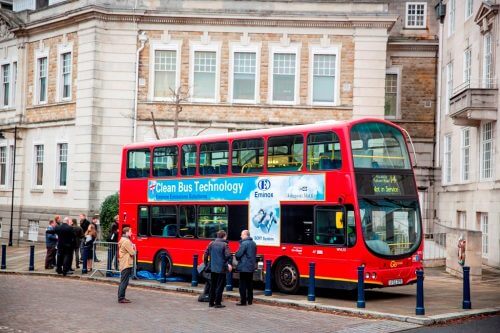 With the ban on new petrol and diesels from 2040 grabbing the headlines it leaves the question; what is going to happen in the near term to tackle air quality? Carlos Vicente at Eminox looks at the detail behind the headlines
With the ban on new petrol and diesels from 2040 grabbing the headlines it leaves the question; what is going to happen in the near term to tackle air quality? Carlos Vicente at Eminox looks at the detail behind the headlines
The Government’s Air Quality Plan was published on July 26 outlining how the Government intends to reduce roadside nitrogen dioxide (NO2) concentrations. Many of the details are still to be finalised, with local authorities given the responsibility for producing detailed plans, though on a strict timescale.The plan is set against new modelling, which shows less improvement in air quality between 2017 and 2021 than was previously predicted. Heavy duty diesel vehicles contribute over half of UK national average roadside concentration of NO2 according to Defra’s Air Quality analysis. Modelling in the new plan shows that, without action, 32 areas, mostly around major roads, will not meet legal air quality limits until well beyond 2020. Not surprisingly, London is one of these areas, and Mayor Sadiq Khan intends to implement the Central London Ultra Low Emission Zone (ULEZ) early, from April 8, 2019.[…]
What you get with a subscription
- Operator & Supplier Profiles
- Face-to-Face Interviews
- Lastest News
- Test Drives and Reviews
- Legal Updates
- Route Focus
- Industry Insider Opinions
- Passenger Perspective
- Vehicle Launches
- and much more!


